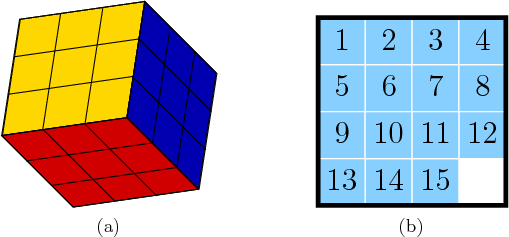
Next: A motion planning puzzle Up: 1.2 Motivational Examples and Previous: 1.2 Motivational Examples and
 |
Chapter 2 covers discrete planning, which can be applied to solve familiar puzzles, such as those shown in Figure 1.1. They are also good at games such as chess or bridge [898]. Discrete planning techniques have been used in space applications, including a rover that traveled on Mars and the Earth Observing One satellite [207,382,896]. When combined with methods for planning in continuous spaces, they can solve complicated tasks such as determining how to bend sheet metal into complicated objects [419]; see Section 7.5 for the related problem of folding cartons.